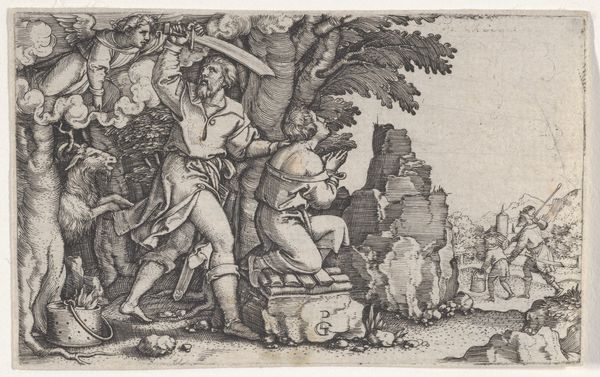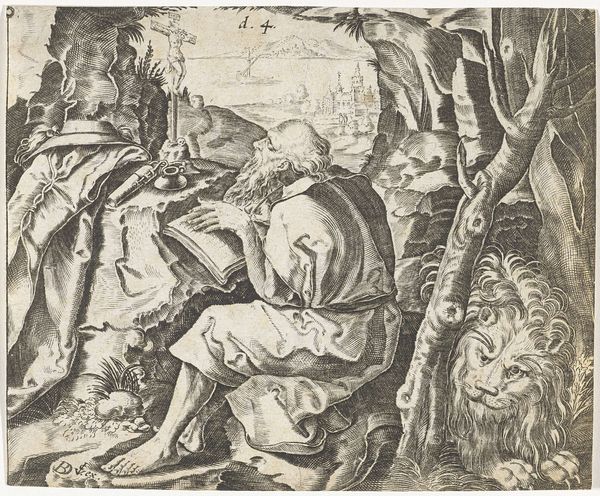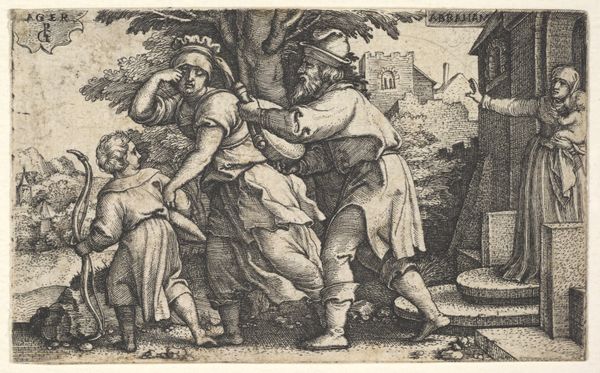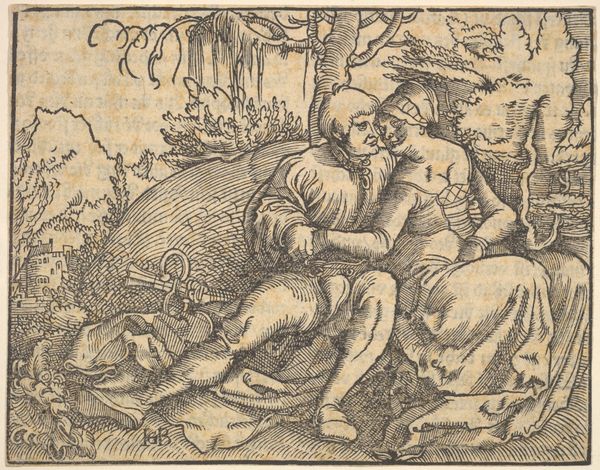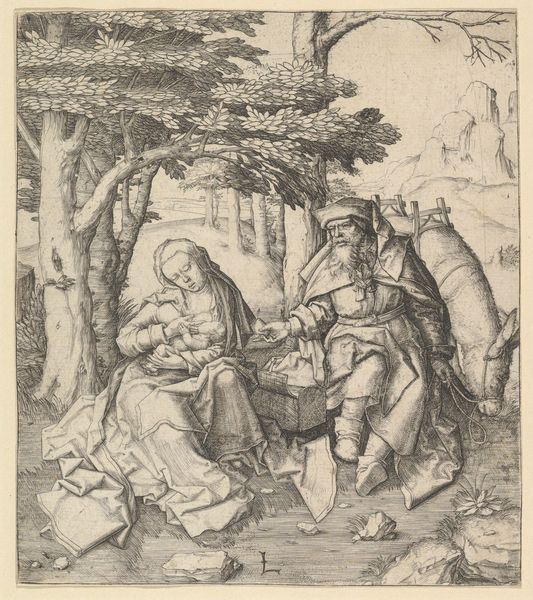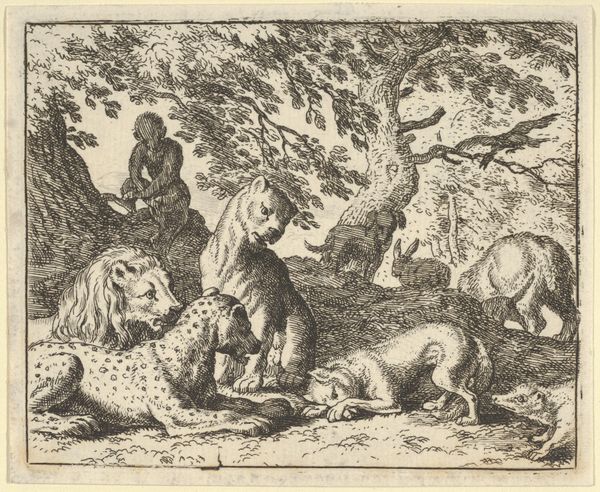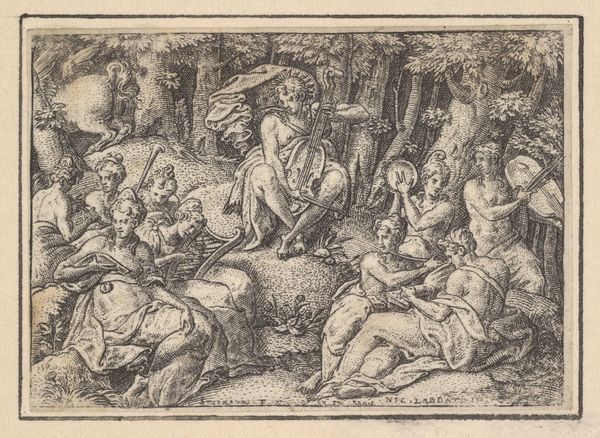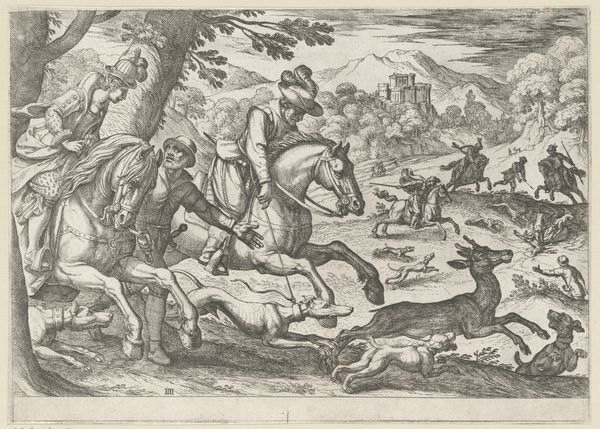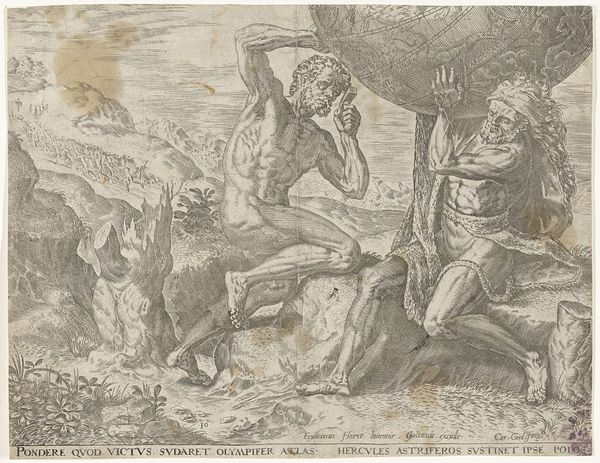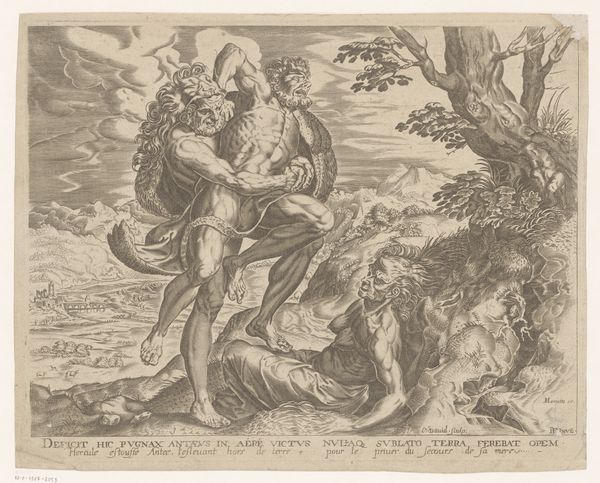
The Good Samaritan Tending the Traveller's Wounds with Oil and Wine or The Priest and the Levite Passing, from "The Parable of the Good Samaritan" 1554
0:00
0:00
drawing, print, etching, engraving
#
drawing
#
narrative-art
# print
#
etching
#
figuration
#
line
#
history-painting
#
northern-renaissance
#
engraving
Dimensions: Sheet: 3 1/8 × 4 5/16 in. (7.9 × 10.9 cm)
Copyright: Public Domain
Editor: This is "The Good Samaritan Tending the Traveller's Wounds with Oil and Wine or The Priest and the Levite Passing," an engraving by Heinrich Aldegrever from 1554. It's currently at the Metropolitan Museum of Art. The scene feels incredibly detailed, almost crowded with figures and textures. What strikes you about this print? Curator: What I find particularly compelling is how Aldegrever uses a biblical parable to comment on the social responsibilities within 16th-century society. Consider how the prominent display of the Samaritan’s act of compassion directly challenges the perceived indifference or negligence of religious authorities, represented by the priest and the Levite. Where do you see evidence of this tension within the image itself? Editor: I notice the priest and Levite are literally elevated on the hill, seemingly turning away from the scene. Meanwhile, the Samaritan is physically engaged with the injured man. It's a very deliberate contrast. Curator: Precisely. And note Aldegrever’s intricate detail. These engravings weren't just artistic exercises; they were a means of disseminating moral and religious ideas during the Reformation. The image becomes a powerful form of visual rhetoric, accessible to a wide audience and capable of shaping public opinion. How might the setting and costume further play into this dialogue? Editor: It's fascinating how the contemporary clothing roots the parable in Aldegrever’s present day. Also, I wonder about the specific community for which this print was intended. It seems directed at a readership concerned with practical ethics. Curator: I agree, and looking at art through that social and institutional lens allows us to engage with these works as something beyond pretty objects: active participants in shaping a particular society. I learned that looking closely can lead to insights about audiences and influence. Editor: Definitely, viewing art through this historical-social lens definitely enriched my perspective!
Comments
No comments
Be the first to comment and join the conversation on the ultimate creative platform.
